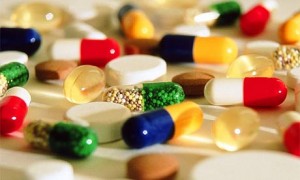Plastics (or the chemical name, phthalates) are now considered the number one pollutant in the human body. They make products flexible, durable, and these chemicals are also in items you would not consider to be plastics, like pesticides, detergents, cosmetics, medications, or your shampoo. They are found everywhere. It is difficult to completely avoid them.
You can live in the most pristine place on planet earth and still find animals polluted with plastics.
It is an interesting fact that plasticizers are over 10,000 to 1,000,000 times higher in our bodies than any other toxins that have been found in EPA studies. Unfortunately once in the body, these plastics do enormous damage.
7 Ways Plastics Damage the Body
1.) Phthalates damage the chemistry of fatty acids most importantly, the fatty acid, DHA (docosahexaenoic acid). This is the fundamental chemistry necessary for making every cell lining or membrane. These fatty acids are the foundation for brain health including memory and recall.
2.) Phthalates can create a zinc deficiency which will compromise the metabolism of vitamins A and B-6. In turn this could lead to conditions such as indigestion, depression, heart disease, cancer, diabetes, and accelerated aging. As a quick side note the combination of low zinc and low DHA can lead to chronic inflammation. Medical literature has clearly identified chronic inflammation as one of the most common underlying pathologies of most diseases leading to auto-immune diseases (rheumatoid arthritis, MS) to cancer and heart disease.
3.) Phthalates has been found to be responsible for damaging the pancreas leading to diabetes, insulin resistance and metabolic syndrome X.
4.) Phthalates has been found to lower sulfation. This means that you are no longer able to effectively detoxify like you should. This in turn can lead to a whole host of health challenges.
5.) Phthalates damage hormone function, especially thyroid and testosterone.
6.) Phthalates can poison the peroxisomes needed for the control of the chemistry of cholesterol. They can cause high cholesterol while at the same time keep cholesterol from forming the “happy hormones” (neurotransmitters) of the brain.
7.) Phthalates can damage the body’s ability to make catalase. Catalase is absolutely essential for devouring up the hydrogen peroxide that cancer cells make to allow them to metastasize or wildly spread throughout the body. Lack of catalase is a reason why many cancers briefly seem to be in remission after treatments, only to resurface months or years later with lethal consequences.
These are only 7 of the devastating effects of plastics in our bodies. Many diseases will never be cured until the phthalates are out.
How to Detoxify Plastics (Phthalates)?
Over accumulation of phthalates in the body has the potential to be a major contender for a series of health challenges. One of the most commonly asked question is where am I getting this exposure from?
Exposure to plasticizers can come from skin absorption of cosmetics, body lotions, hair gels, shampoos, and deodorants. You can ingest them from water, PVC (water) pipes, detergents, and foods. We also can inhale them from airborne adhesives and glues, building materials, school/business supplies, furnishings, auto interiors, solvents, plastics, lubricants, insect repellants, vinyl flooring, carpet tiles, vinyl wallpaper, body toiletries, artificial leather, adhesives, dyes, and toys. Don’t forget that plastics coat every wire in the electrical systems of our homes, offices, appliances and computers. As the wires heat, the plastic coating outgases into the air.
So as you can see, plastics are everywhere and, to be quite honest, they are difficult to avoid.
The best most people can do is to be certain they are doing everything they can to effectively and efficiently eliminate any build-up of plastics (phthalates) in the body.
It is first important to determine your level of accumulation. For some people they are fast metabolizers and quickly eliminate any exposure to plastics or for that matter most environmental toxins. On the other hand, there are many people who have a poorly functioning detoxification system and will unfortunately accumulate plastics as well as other environmental toxins.
The best way to determine your level of accumulation or toxic burden is to get tested. The recommended lab test is called GPL-TOX Profile (Toxic Non-Metal Chemicals). Schedule an appointment with Zen to get your lab test ordered.
How Do We Get Rid of Them?
Let’s look at 3 ways you can help your body detox it’s plastic overload:
1.) Since they are detoxified through glucuronidation, take IndolPlex and Calcium D-Glucarate each 2 twice a day.
2.) Having 2 or more servings of Brassica or cruciferous vegetables a day revs up the detoxification of plastics. These include cabbage, broccoli, brussels sprouts, cauliflower, radishes, mizuna, watercress, arugula, turnips, collard greens, kale, rutabaga, and more.
3.) A third way to get the phthalates out is with your Far Infrared Sauna. It is important to have a health professional knowledgeable in the best protocol for using the Far Infrared Sauna.
Meanwhile, considering the level of plastics we are exposed to on a daily basis it may be necessary for slow metabolizers and accumulators of plastics to regularly follow a detox protocol as listed above.
I like to conclude and be certain that everyone understands the seriousness and potential danger of an over accumulation of plastics in the body. Your present and future health depends on doing your due diligence to clear your body of these environmental toxins.
—
Reference:
Rogers S, Detoxify or Die, Prestige Publishing, 2002
Compliments from Functional Medicine University





